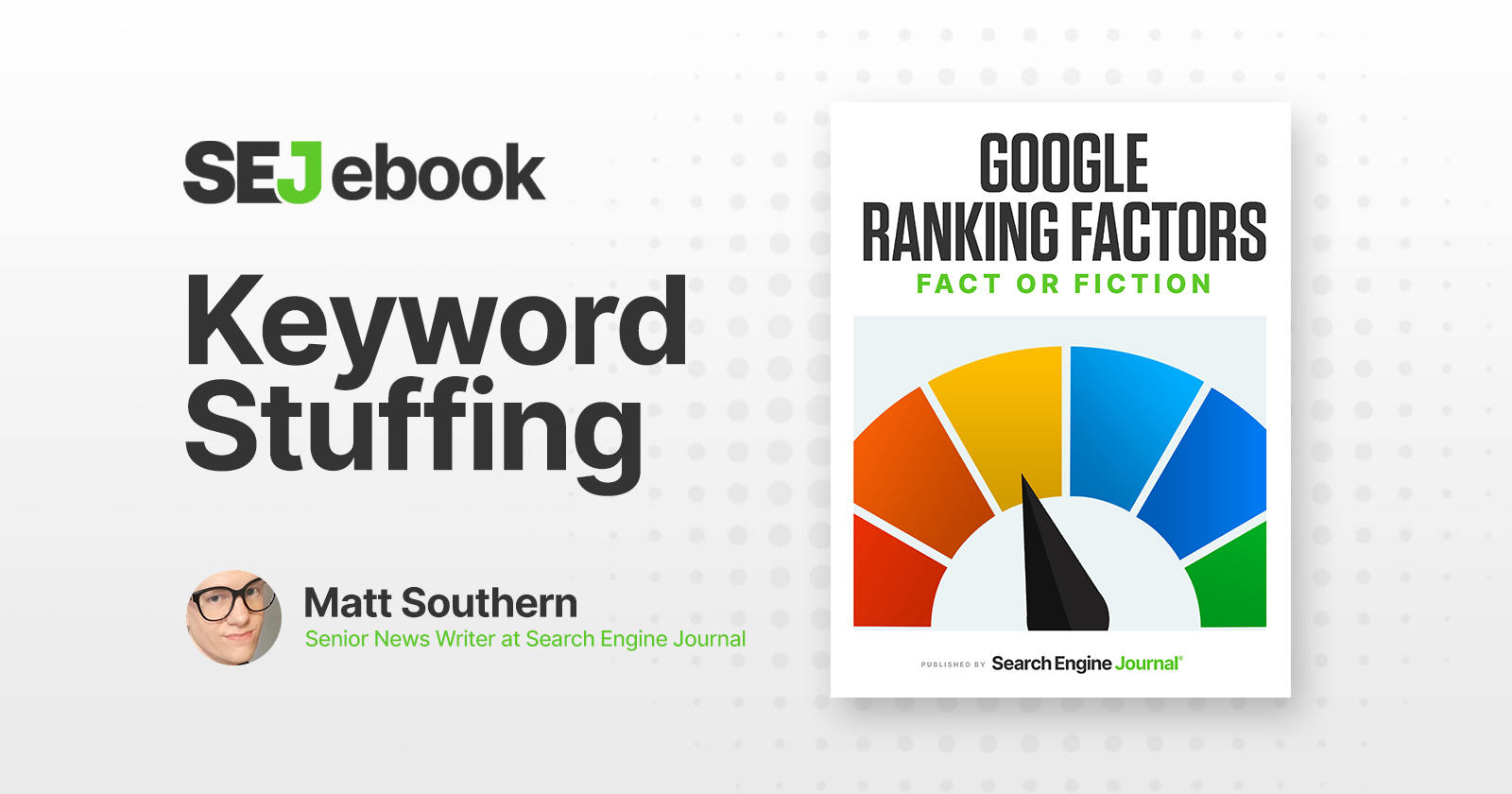SEO
What You Need To Know

If some keywords are good, then more must be better, right?
That’s the simple logic behind keyword stuffing as a ranking factor.
In the early days of web search, way before SEO was a thing, Google ranked web content using a basic set of signals.
Keywords were one of those signals. The more keywords you used, the better a page would rank, especially in the earliest days of search engines.
Keyword stuffing was a widely used technique because it yielded results, at least for a period of time.
But how does Google treat it now?
Here’s the history of the claims around keyword stuffing, followed by what the evidence says about it today.
Advertisement
Continue Reading Below
The Claim: Keyword Stuffing Is A Ranking Factor
Exact match keywords were once a signal that carried a lot of weight. If a keyword appeared on a page exactly as the user typed it, the page would have a high chance of ranking.
When people discovered they could rank their websites for more queries by repeating different variations of keywords on a page, it led to the technique known as keyword stuffing.
You could get away with a lot of keyword stuffing. That ranged from overuse of keywords in on-page copy, to entire paragraphs that were just keywords separated by commas.
Advertisement
Continue Reading Below
A more egregious form of keyword stuffing involved hiding paragraphs of keywords by making the text the same color as the page’s background. Google could see hidden keywords when crawling the pages, but users wouldn’t notice anything out of place.
Keyword stuffing wasn’t limited to on-page copy. Page titles and meta descriptions were packed full of keywords in an effort to manipulate their search rankings.
When people talk about the early days of SEO being like the Wild West, this is what they’re referring to. Not only were sites not penalized for keyword stuffing, they were more likely to benefit from it.
And Then The Google Updates Start Rolling Out…
The impact of keyword stuffing on search rankings changed in 2003 when Google rolled out the Florida update, which is regarded as Google’s first major algorithm update.
Evidence suggests the Florida update primarily targeted link spam, but sites engaging in other spammy techniques were impacted as well.
Florida reduced the ranking impact of keyword stuffing to a certain extent, but it still didn’t go completely unrewarded by Google’s algorithms.
In 2011, Google launched the Panda update which targeted low quality sites and thin content with little or no added value.
That invariably led to keyword stuffed pages getting demoted in search results, as those pages tended to add less value to the web compared to pages that weren’t written to game search engines.
Advertisement
Continue Reading Below
After Panda, Google strictly advised against doing any keyword stuffing.
Lastly, we can’t talk about the evolution of keywords in SEO without mentioning Google’s introduction of the Hummingbird update in 2013.
Hummingbird brought conversational search to Google, which meant users could type queries using natural language and Google’s algorithm would understand what they were looking for.
Approaches to content writing changed after this update, particularly as it relates to unnatural use of keywords. It might be fair to say Hummingbird sparked the shift away from writing content for search engines to writing content for people.
Keyword stuffing was done purely to manipulate rankings and didn’t offer anything of value to searchers. It’s an obsolete technique now that Google’s search algorithm is more adept at recognizing for quality content.
Advertisement
Continue Reading Below
The Evidence For Keyword Stuffing As A Ranking Factor
There’s evidence all over Google’s search results that keyword stuffing isn’t a ranking factor.
Today’s SERPs have page titles that read naturally, meta descriptions that contain paragraphs of actual copy, and articles that aren’t filled with unnecessary uses of exact-match phrases.
But that’s anecdotal evidence. Let’s look at hard evidence straight from the source.
Google’s Webmaster Guidelines, which sites have to follow in order to remain indexed in search, acknowledges keyword stuffing in a chapter called “irrelevant keywords.”
It reads:
“’Keyword stuffing’ refers to the practice of loading a webpage with keywords or numbers in an attempt to manipulate a site’s ranking in Google search results. Often these keywords appear in a list or group, or out of context (not as natural prose). Filling pages with keywords or numbers results in a negative user experience, and can harm your site’s ranking. Focus on creating useful, information-rich content that uses keywords appropriately and in context.”
Advertisement
Continue Reading Below
If there was any doubt whether Google demotes pages filled with an unnecessary amount of keywords, there’s your official confirmation right in the Webmaster Guidelines.
The Verdict: Keyword Stuffing As A Ranking Factor
Keyword stuffing is a confirmed negative ranking factor.
Advertisement
Continue Reading Below
Attempting to manipulate search rankings with repeated uses of words or phrases will only cause a site to rank lower in Google’s search results. Be wary of any advice that suggests otherwise.
Featured image: Paulo Bobita/SearchEngineJournal

You must be logged in to post a comment Login